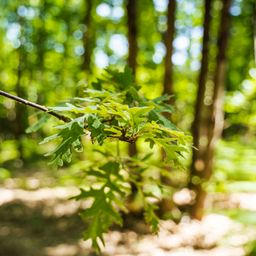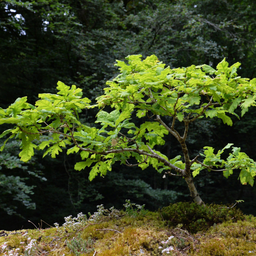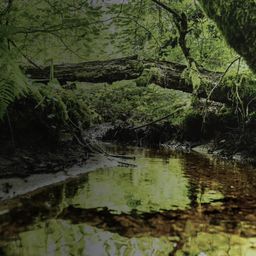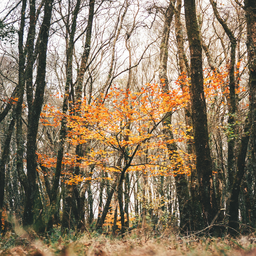May 5, 2023
What is sustainable forestry and what are the benefits?
Sustainable forestry is important in the fight against climate change and how we manage forest ecosystems for future generations.

Sustainable forestry is a vital part of the fight against climate change and making sure future generations can enjoy all the benefits that forests and trees bring. Overall, the number of forests on the planet is constantly decreasing. But a sustainable approach to forest management can change that and bring environmental, social and economic benefits to communities across the world.
What is sustainable forestry?
Essentially, sustainable forestry is a forest management methodology that aims to balance environmental, social, and economic objectives.
Rather than leave forest ecosystems completely untouched, it’s about maintaining or enhancing their productivity, diversity, and resilience. At the same time, sustainable forestry methods also lead to the production of natural resources and services that directly benefit local communities and the wider world.
Sustainable forestry techniques recognise that forests are a resource that can be used responsibly and bring long-term benefits. In many places, we see forests poorly managed in an unsustainable manner, which leads to a huge reduction in the number of trees. In some cases, poor forest management can see forests disappear completely.
Here at EcoTree, we believe in sustainable forest management and our team of foresters carry out modern sustainable forestry practices every day. That’s because we know it’s more than possible for forests to both flourish and provide. It’s about finding that balance and supporting vital natural ecosystems.
How is sustainable forestry different from other forestry methods?
There are a number of laws, regulations and forest management practices to consider, but what does sustainable forestry mean ‘on the ground’? What makes it unique when compared to common forestry methods used in the past?
While it is difficult to find a single definition of sustainable forestry, often it’s about how the forest owner chooses to maintain and manage their land. Previously, large forest areas have been felled through a practice called clear-cutting. Often, clear-cutting leaves wide open areas that make it very difficult for the forest to recover from.
At EcoTree, our sustainable forestry methods mean we only cut selected trees – we never clear-cut our forests. That allows the forest to regrow naturally and its biodiverse, natural habitats to stay in place and thrive. Key to this sustainable approach is the use of mixed tree species and sizes, which prevent forests becoming monocultures.
When the forest is allowed to grow naturally and with variation, its original ecosystems and biodiversity is preserved. In monoculture forests, only certain plants and animals benefit.
How sustainable forestry helps fight climate change
Forests are the world’s second largest carbon sink, with only our vast oceans able to absorb more carbon dioxide. That’s why forests are getting more and more attention when it comes to how we collectively tackle global warming and climate change.
The reality is we need more forests and much less clear cutting. Sustainable forestry methods allow us to benefit from our beautiful forests without causing them to disappear. The more trees we have on our precious planet, the better chance we have of counteracting the negative effects of climate change.
In terms of how it works, trees do a great job of binding carbon from the Earth’s atmosphere as part of the photosynthesis process. What’s more, that carbon stays locked in the wood for many decades, even when it is cut and turned into timber through sustainable forestry practices.
Benefits of sustainable forestry
There are a number of advantages that come with taking a sustainable approach to forest management. A successful forest will have a fantastic balance that means it offers environmental, economic and social benefits. These are the three key areas when it comes to sustainable forestry.
Environmental benefits of sustainable forestry
When we talk about sustainable forestry, the first thing that comes to mind is usually its environmental importance and role in fighting climate change. And while the climate is the most important challenge facing the world today, sustainable forestry is good for the environment in lots of other ways too.
Conservation of forest ecosystems
Sustainable forestry practices aim to maintain and improve the productivity, diversity, and resilience of forest ecosystems. Finding the right balance allows forest ecosystems to stay healthy and provide important ecological and environmental services, including clean air, water, and habitats where wildlife can thrive.
Reduced erosion
Unsustainable logging practices can cause soil erosion, which has a negative impact on soil quality and how many nutrients are available. Overall, that leads to the forest being less productive. On the other hand, sustainable forestry helps to reduce soil erosion by carefully planning and managing how, when and the number of trees that get felled. The soil is instead protected and left mostly undisturbed.
Climate change mitigation
Forests are crucial in the fight against climate change as they absorb carbon dioxide from the atmosphere through photosynthesis. Sustainable forestry practices help to sequester carbon by promoting healthy and productive forests that continue to absorb and store carbon throughout their lifetime. Trees and forests are just fantastic carbon sinks, which help reduce the concentration of greenhouse gases in the atmosphere and so mitigate climate change.
Better water quality
Sustainable forest management also improves the quality of water in a number of ways, including through repairing and maintaining riparian zones. A sustainably managed forest can directly help improve water quality by filtering pollutants and sediment from runoff. When water sources remain clean and healthy, it is hugely beneficial for people, plants and wildlife.
Biodiversity conservation
Sustainable forestry practices help to preserve biodiversity by protecting forest habitats and reducing the fragmentation of ecosystems. With healthy forest ecosystems, it is easier to maintain the ecological balance of the forest and make sure that a wide range of species, both plants and animals, can continue to thrive in their natural habitats.
Economic benefits of sustainable forestry
Sustainable forestry means using the forest responsibly and that includes the resources it produces. Wood is a valuable resource that can be used in so many different ways. That includes the construction industry, where wood can replace fossil-heavy materials, such as cement and steel.
Sadly, unsustainable forestry practices have caused many people to be sceptical about using the forest as a resource at all. But the truth is, when sustainable forestry is done right, it’s possible to both protect and nurture the forest's ecosystem, use it as a resource and find several other economic benefits.
Job creation
Sustainable forestry practices create employment opportunities across a wide range of sectors. In just forest management, there are roles in harvesting, processing, and marketing products that originate in the forest. In developing countries, the forestry sector can provide jobs to millions of people, many of whom live in rural areas where it can be a challenge to find other opportunities.
Income generation
Sustainable forestry practices provide a source of income for individuals and communities involved in managing and using forest resources. This income can come from the sale of timber and other non-timber forest products (NTFPs), such as fruits, nuts, and medicinal plants. Sustainable forestry management can also be used to provide the wood needed to create high-value products, such as furniture and paper.
Economic growth
The forestry sector can contribute to overall economic growth by providing raw materials for various industries, including construction, paper, and furniture. Managed sustainably, it can also promote the development of sustainable value chains, which can create new business opportunities and improve market access for forest products.
Ecosystem services
Ecosystem services include carbon sequestration, watershed protection and biodiversity conservation, all of which have economic value. Through sustainable forestry, these services can generate income through the sale of carbon credits, watershed services, and other payments for ecosystem services (PES) schemes.
Social benefits of sustainable forestry
It’s important not to forget the social value that sustainable forestry offers. Time spent in the trees is great for our wellbeing and forests provide a meeting point for all lifestyles and cultures, not to mention our learning and development. People use forests for hiking and biking, as well as to find peace in an often busy schedule.
Of course, forests also give many people their livelihoods and form the heart of communities all over the world. They are as old as time and packed with meaning, culture and spiritualism. People really care about forests and the social benefits they bring are part of everyday life for millions of us across the planet.
Community development
Sustainable forestry practices can contribute to community development by providing access to basic services, such as education, healthcare, and infrastructure. It can help build social cohesion and empower communities, which can use the forest to meet, share and learn through a range of events and activities.
Cultural and spiritual values
Forests have cultural and spiritual significance for many communities around the world. Sustainable forestry best respects and preserves these values, with traditional knowledge and forest management practices passed on and maintained for future generations.
Recreation and leisure
Forests provide the perfect space for people of all backgrounds to enjoy. They are a place for recreation, leisure, and tourism through activities including hiking, camping, and wildlife watching. Sustainable forestry methods help ensure that these precious social opportunities are preserved and remain open and available to all long into the future.
Support sustainable forestry through EcoTree
Do you want to support sustainable forestry and take positive climate action? Here at EcoTree, we sustainably manage forests across Europe and make it easy for individuals and companies to contribute.
Our model, in short: When you become a tree owner through our TreeShop, those trees act as long-term carbon sinks and help preserve the forest's biological diversity. When they’re finally harvested and sold for sustainable timber, new trees are planted in their place, and 100% of the profit is yours.
Buy trees with EcoTree or learn how you can support one of our many biodiversity conservation projects. You can also choose to give trees as a gift or as a way to celebrate a special occasion.












